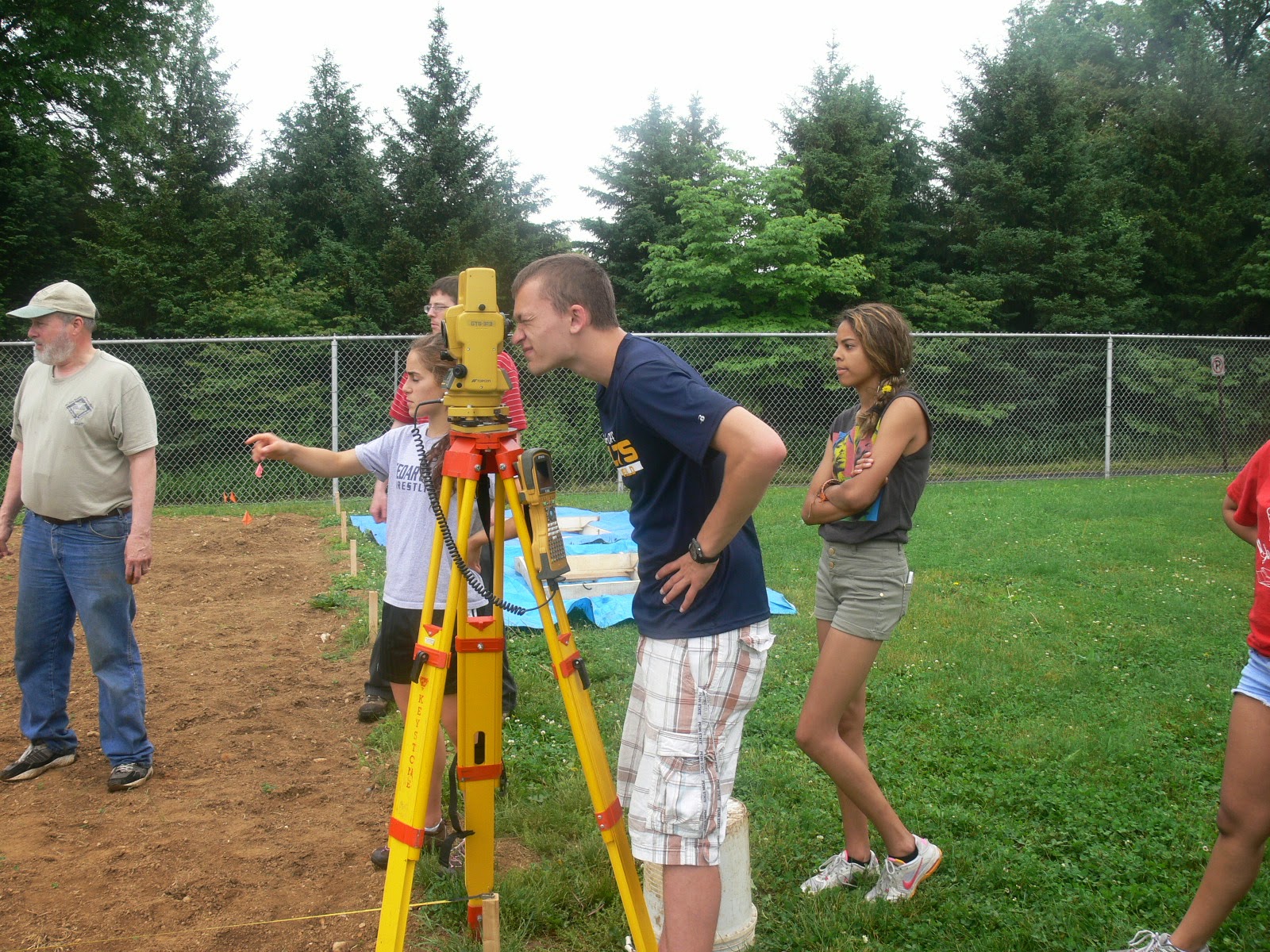Philadelphia Family Court House site (36Ph161) profile of excavation block
Continuing on the alphabetical trail of archaeology, this
week TWIPA lands on the letter P. Since the conclusion of fieldwork at Fort
Hunter this fall, the Section of Archaeology has been busy receiving a steady stream
of cultural resource management collections from a variety of development projects
including; Turnpike improvements, road realignments, bridge replacements, and a
handful of natural gas pipelines. Another recent submission of artifacts to the
museum is the result of a municipal office building project, and, for the
purposes of this week’s post, is conveniently located in Philadelphia.
Philadelphia is no stranger to urban archaeology. From the
National Park Service excavations in the 1950s for Independence Mall, to major
transportation corridor projects of the 1970s and 1980s, and still more recent
projects like the Metropolitan Detention Center and the National Constitution
Center, a great deal of the city’s archaeological heritage has been documented
for the benefit of all Pennsylvanians and the Nation at large. Indeed, no fewer
than 64 registered archaeological sites, most of them historic domestic sites,
have been identified within a one mile radius of this particular project (Gall,
et al 2012).
project area prior to excavation
In 2010, Richard Grubb & Associates Inc. was contracted
to conduct an archaeological survey, evaluation and subsequent mitigation at
the site of a new office building to be constructed for the City of
Philadelphia’s Family Court House. Located on the northwest corner of 15th
and Arch Streets, the project APE, or area of potential effects, was at the
onset paved with asphalt and being used as a parking lot.
With the aid of historic fire insurance maps, portions of
the project area were designated as having either high, medium, or low
archaeological sensitivity, based on the presence or absence of basements of
no longer extant buildings, and also areas where there is no record of any structures
ever have being built. Accordingly, more resources were expended investigating areas
identified as having high and medium sensitivity, although some sampling of low
sensitivity areas took place as well.
brick cellar floor feature
brick lined shaft feature
Trench excavations within the project area revealed a number
of archaeological features that can be divided into two general categories. The
first, are structural remains of former house lots dating from the early through
middle 19th Century, and are represented by foundation walls, brick
cellar floors, a fireplace, and shaft features including a well/cistern and
brick lined privy. The second type of feature consist of the “buried A horizon”
or the original historic ground surface containing slightly earlier late 18th
through early 19th Century deposits along with associated sheet
middens and refuse pits.
shell sheet midden feature
ceramic sherd refuse pit feature
Of the over 35,000 artifacts recovered, nearly one half fall
into the domestic category, including coarse and refined earthenware ceramics,
glass tablewares and containers, and dietary animal bone. Another quarter of
the finds consist of architectural debris such as large quantities brick and
window glass, and lesser amounts of nails and roofing slate. Although the
fewest in number, small finds and miscellaneous objects are often the most
personal finds, and are therefore generally more interesting. Examples from the
site include a honey colored gun flint, a bone toothbrush fragment, an
assortment of buttons and pins, and clay tobacco pipe fragments.
personal items recovered from 36Ph161
clay smoking pipe fragments recovered from 36Ph161
Detailed review of the available historic documentation such
as tax records, deed transfers and population census data was critical in
enabling the archaeologists to reconnect the recovered artifacts to specific
family groups of differing socio-economic status during the 1780s through the
1840s. The project area underwent drastic changes throughout its history, from
pastoral land on the edge of the growing colonial city in the late 18th
Century to residential and ultimately commercial use of the area through the
late 19th and early 20th centuries.
The archaeological
excavation conducted for the Philadelphia Family Court House site and the
analysis of the artifacts recovered offer a unique window into the changing lifestyles
and consumption patterns of the inhabitants of this section of the city over
time, and of the changing landscape of the city itself.
Reference:
(2012) Gall, Michael J.; Michael Tomkins; Robert Lore; Amy Raes
Living on the Edge: Phase IB/II/III Archaeological Survey Philadelphia Family Court House 1501-1511 Arch Street City of Philadelphia, Philadelphia County Pennsylvania Richard Grubb & Associates, Inc.






.jpg)







